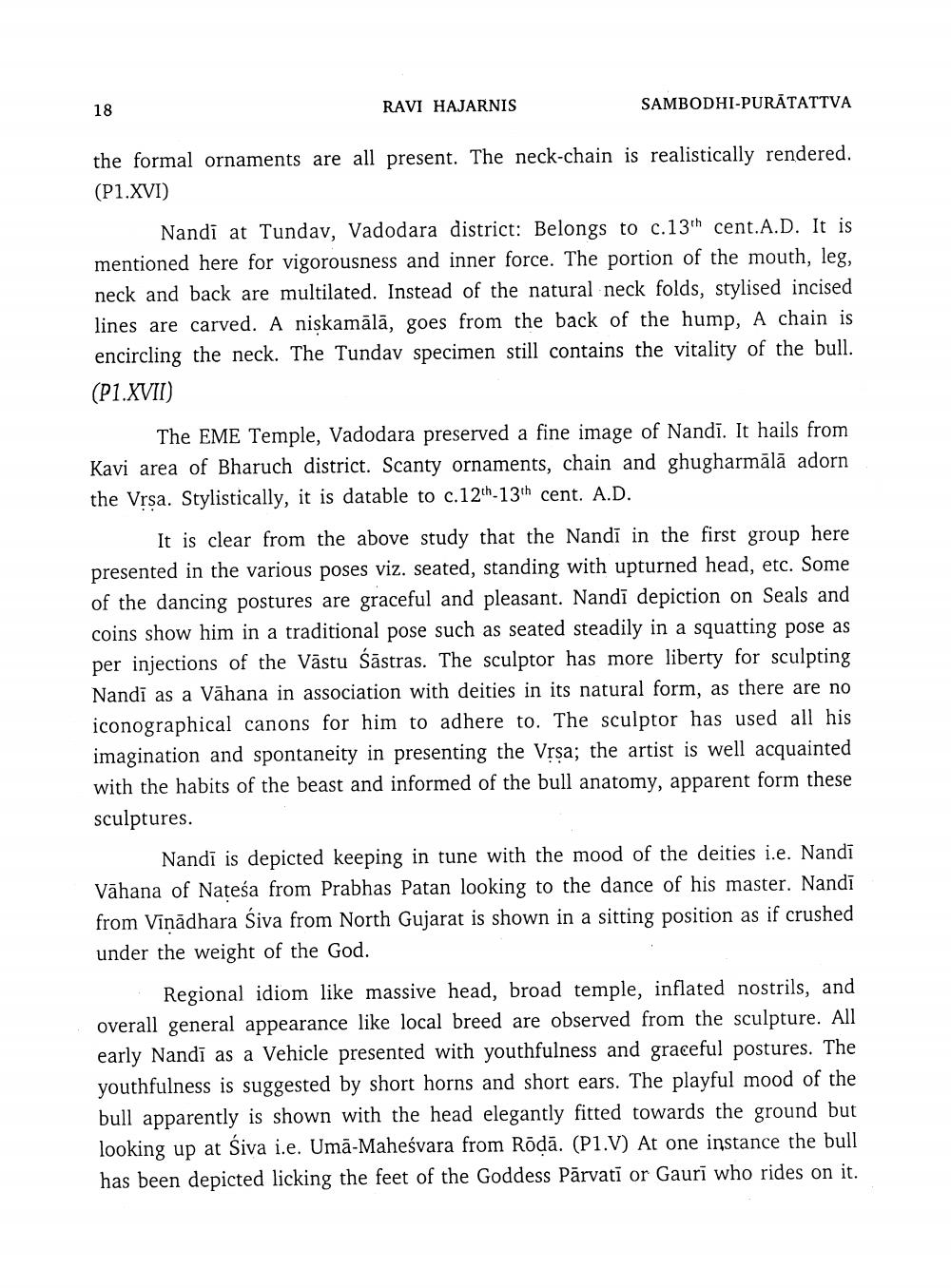________________
18
RAVI HAJARNIS
SAMBODHI-PURĀTATTVA
the formal ornaments are all present. The neck-chain is realistically rendered. (P1.XVI)
Nandi at Tundav, Vadodara district: Belongs to c.13th cent.A.D. It is mentioned here for vigorousness and inner force. The portion of the mouth, leg, neck and back are multilated. Instead of the natural neck folds, stylised incised lines are carved. A niskamālā, goes from the back of the hump, A chain is encircling the neck. The Tunday specimen still contains the vitality of the bull. (P1.XVII)
The EME Temple, Vadodara preserved a fine image of Nandi. It hails from Kavi area of Bharuch district. Scanty ornaments, chain and ghugharmālā adorn the Vrsa. Stylistically, it is datable to c.12h-13th cent. A.D.
It is clear from the above study that the Nandi in the first group here presented in the various poses viz. seated, standing with upturned head, etc. Some of the dancing postures are graceful and pleasant. Nandī depiction on Seals and coins show him in a traditional pose such as seated steadily in a squatting pose as per injections of the Vāstu Šāstras. The sculptor has more liberty for sculpting Nandi as a Vāhana in association with deities in its natural form, as there are no iconographical canons for him to adhere to. The sculptor has used all his imagination and spontaneity in presenting the Vrsa; the artist is well acquainted with the habits of the beast and informed of the bull anatomy, apparent form these sculptures.
Nandi is depicted keeping in tune with the mood of the deities i.e. Nandi Vāhana of Natesa from Prabhas Patan looking to the dance of his master. Nandi from Vinādhara Siva from North Gujarat is shown in a sitting position as if crushed under the weight of the God.
Regional idiom like massive head, broad temple, inflated nostrils, and overall general appearance like local breed are observed from the sculpture. All early Nandi as a Vehicle presented with youthfulness and graceful postures. The youthfulness is suggested by short horns and short ears. The playful mood of the bull apparently is shown with the head elegantly fitted towards the ground but looking up at Siva i.e. Umā-Maheśvara from Rödā. (P1.V) At one instance the bull has been depicted licking the feet of the Goddess Pārvati or Gauri who rides on it.




